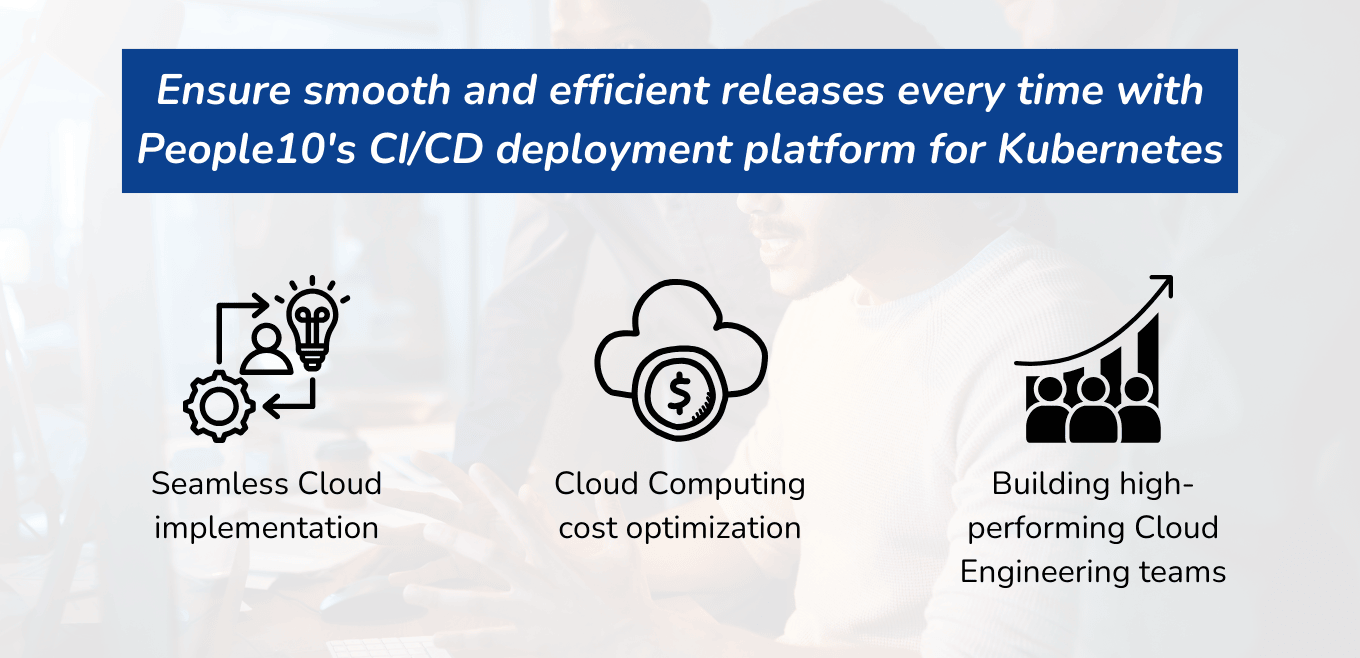Cloud computing, known for its scalability and flexibility, has become a cornerstone for modern businesses. As organizations evolve, their cloud environments grow increasingly complex, resulting in infrastructure that can be both costly and difficult to manage. Optimizing cloud resources ensures their efficient and cost-effective use while meeting key business requirements such as performance, security, and compliance.
What is Cloud Computing?
Cloud computing refers to hosting IT resources such as servers, storage, and applications off-site, with access provided through the Internet. Instead of maintaining physical servers and equipment in an on-premises data center, businesses can rely on a cloud service provider (CSP) to handle these operations. This enables remote management of resources like databases, email servers, and essential software, accessible from any device with an internet connection.
This shift has significantly changed how organizations operate. Traditional server rooms, manual backups, and frequent hardware upgrades are no longer necessary. The CSP takes care of IT infrastructure maintenance and management, allowing businesses to focus on growth, innovation, and customer service rather than dealing with the complexities of IT logistics.
How can Cloud Computing impact your business?
Cloud computing delivers a wide range of IT services, much like an on-site server, but with one key difference: it operates without physical limitations. This means businesses can access and manage databases, generate business intelligence (BI) reports, run applications, and securely store data all without the need to own or maintain physical server infrastructure.
The flexibility of cloud services allows businesses to scale operations based on demand, optimizing both costs and performance. Moreover, it enables companies to experiment with advanced technologies like artificial intelligence and machine learning, eliminating the need for expensive, specialized hardware on-site. With a pay-as-you-go model, organizations only pay for the resources they use, making cloud computing a cost-effective and efficient solution.
Key benefits of using Cloud Computing for your business
Embracing cloud computing offers businesses two immediate advantages: a significant reduction in IT costs and seamless access to data and applications from virtually anywhere. Beyond cost savings, cloud solutions empower remote work, support mobile workforces, and enable organizations to swiftly adapt to changing business needs.
Enhanced security is another critical benefit. Over 90% of organizations utilizing cloud services report an improved cybersecurity posture. This improvement is attributed to advanced security measures provided by cloud providers, including encryption, regular updates, and compliance with industry standards. By outsourcing these tasks, businesses can protect sensitive information effectively while reducing the burden on internal teams and avoiding additional expenses.
Cloud computing also strengthens disaster recovery capabilities. By distributing essential data across multiple locations, companies are better equipped to recover from unexpected disruptions such as cyberattacks or natural disasters. These advantages and several others make cloud computing a compelling choice for businesses seeking resilience and efficiency in a rapidly evolving digital landscape.
- 24/7 expert monitoring: Many cloud providers include 24/7 expert monitoring as part of their service packages, but maintaining in-house IT specialists for constant system oversight can be costly. Your Service Level Agreement (SLA) typically covers round-the-clock monitoring, providing peace of mind without the additional expenses.
- Scalability on demand: Businesses often face fluctuating demand, especially during peak seasons. Cloud computing allows you to easily scale your IT resources up or down, helping you save money by avoiding unnecessary services during quieter periods.
- Seamless mobility: Cloud services enable employees to access work resources from any device—a tablet, smartphone, or desktop computer. This flexibility supports remote work, ensuring that your team can stay productive no matter where they are.
- Data loss prevention: Storing data across multiple locations reduces the risk of significant loss due to server failure or local disasters. Even if one data center goes down, others can take over, ensuring business continuity.
- Automatic software updates: Keeping up with frequent security patches and updates can be a challenge, but cloud services handle these updates automatically. This reduces the risk of security vulnerabilities, ensuring that your business always has access to the latest software versions.
- Global access: With an internet connection, you can access your company’s data anytime and from anywhere in the world. This ensures that all team members, regardless of location, can work efficiently.
- Reduced downtime: Unlike local servers, which may experience significant downtime during issues, cloud services are designed for high availability. If one server or location goes offline for maintenance or repairs, others can quickly take over, minimizing disruptions to your operations.
- Staying competitive: By adopting cloud solutions, businesses can gain an edge over competitors in terms of speed, cost-efficiency, and innovation. The burden of maintaining physical servers and IT staff is eliminated, allowing more time and resources to focus on strategic growth and investing in core business areas.
However, choosing the right Cloud Computing model is critical. It is important to identify the best deployment strategy for your business, as different approaches have distinct requirements and costs. When implemented effectively, Cloud Computing provides exceptional flexibility, scalability, and cost savings, while relieving the strain of managing an on-premise data center.
How Cloud Computing enables better resource utilization
Cloud computing has revolutionized the management of IT infrastructure by offering a scalable and flexible solution that enhances resource utilization and optimizes costs through dynamic provisioning.
Optimizing resource allocation in Cloud Computing
Cloud computing allows businesses to allocate and de-allocate computing resources based on real-time needs, providing significant cost savings. Unlike traditional on-premises data centers, where companies had to invest in expensive hardware and software that often went underutilized, cloud computing lets businesses pay only for the resources they use. This flexibility enables companies to scale up or down as required.
Cloud elasticity
Cloud elasticity allows businesses to avoid the costs associated with over-provisioning. By adjusting computing power, storage, and network resources based on demand, businesses can ensure efficient resource utilization while avoiding unnecessary expenses.
Pay-as-you-go pricing
Pay-as-you-go pricing is a model commonly used in cloud computing to optimize costs. Rather than paying for a fixed capacity that may be underused, this approach allows businesses to pay only for the resources they consume.
Smart pricing models
Cloud service providers offer various pricing options to help businesses reduce costs, such as reserved instances and spot instances. Reserved instances provide discounted rates for long-term commitments, while spot instances allow companies to bid on unused cloud resources at a lower price.
Reducing expenses with Cloud Computing
Cloud computing reduces operating expenses by eliminating the need for on-site software updates, hardware maintenance, and security management. These responsibilities are handled by the cloud service provider, allowing businesses to focus on their core activities.
Seamless cloud deployments and empowered engineering teams
Cloud computing enables businesses to scale resources according to demand, pay for actual usage, and lower operational overhead. Through dynamic provisioning, it enhances resource utilization and cost optimization. Contact us today to learn how People10 can empower your engineering team and ensure smooth cloud deployments.
Hidden costs to be aware of when considering Cloud Computing
1. Migration costs
While transitioning to the cloud can lead to cost savings over time, the initial migration process can be both complex and expensive. Organizations should account for expenses associated with data transfer, employee training, and the re-architecting of applications to ensure a smooth transition.
2. Unexpected data transfer charges
Cloud providers often impose fees for data transfers to and from their platforms. For organizations with large volumes of data or extensive data transfer needs, these costs can quickly escalate. It is essential to analyze and plan for these charges to avoid unexpected expenses.
3. Service interruptions and outages
Cloud services are not immune to outages or disruptions, which can impact business operations. To mitigate risks, organizations should assess the potential consequences of downtime and implement backup systems or redundancy measures to maintain continuity.
4. Vendors lock-in
Relying on a specific cloud provider can result in vendor lock-in, making it difficult to switch providers or negotiate better terms in the future. To maintain flexibility and avoid long-term dependence, organizations should thoroughly review vendor agreements and consider multi-cloud strategies.
5. Rising expenses for network bandwidth
Network connectivity is essential to Cloud Computing. To meet the growing demand, organizations would have to upgrade their network infrastructure, which would raise the cost of network bandwidth.
6. Security and compliance challenges
Utilizing cloud services requires organizations to ensure data security and privacy while adhering to industry regulations. The overall cost assessment should factor in the investments needed for implementing robust security measures and meeting compliance standards.
7. Insufficient internal knowledge
Migrating to the cloud demands specific technical expertise. Companies lacking skilled in-house personnel might incur additional costs for hiring or training cloud professionals, thereby increasing overall expenditures.
8. Inadequate resource allocation
If cloud resources are not properly monitored and optimized, underutilization can result in unnecessary expenses. Organizations should conduct regular resource utilization analyses and optimize their deployments to avoid overspending.
While cloud computing offers significant cost-saving opportunities, businesses should also be aware of potential challenges and hidden costs. By thoroughly evaluating migration expenses, data transfer fees, downtime risks, vendor agreements, bandwidth needs, compliance and security requirements, internal expertise gaps, and resource allocation strategies, organizations can maximize the financial benefits of cloud computing.
Ensure smooth and efficient releases every time with People10’s CI/CD deployment platform for Kubernetes

As businesses increasingly adopt cloud computing and Kubernetes, the need for optimizing cloud investments while maintaining high-performing engineering teams has become critical. People10 addresses this challenge by providing a comprehensive CI/CD deployment solution that empowers engineering teams and facilitates seamless cloud deployments.
Seamless Cloud implementation
At People10, we understand the importance of delivering cloud deployments that are both timely and cost-effective. By automating the deployment process and leveraging cloud-native technologies such as Kubernetes, we ensure the fast and reliable deployment of your applications. This approach not only reduces operational costs associated with manual deployment but also saves valuable engineering time.
Cloud Computing cost optimization
Reducing expenses in cloud computing is a critical priority for organizations across industries. At People10, we provide tools and insights to help businesses optimize resource utilization and eliminate unnecessary spending. Our platform enables companies to identify unused resources, right-size their infrastructure, and implement cost-effective scaling strategies. By adopting this proactive approach to cost management, businesses can ensure they pay only for what they need, leading to significant long-term savings.
Building high-performing Cloud Engineering teams
At People10, we are committed to empowering cloud engineering teams to reach their full potential. By streamlining the deployment process through automation and providing a user-friendly interface, we enable engineers to focus on their core expertise: coding. With our support, engineering teams can efficiently iterate, test innovative features, and deploy applications seamlessly.
Transforming Engineering Teams With our CI/CD Deployment Platform
Get seamless cloud deployments with People10 and empower your engineering team to become top performers.



